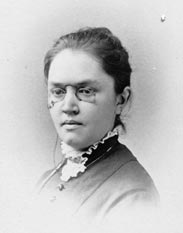“Surely martyrs, irrespective of the special phase of the divine idea for which they gladly give up their bodies to torture and to death, are the truest heroes of history.”
(Katherine Lee Bates)
The Origin of the Hymn “America the Beautiful”
Among the patriotic songs that stir the American heart, few have the same blend of reverence, poetry, and prayer as “America the Beautiful.” Unlike other national hymns that emphasize battle, independence, or political liberty, this hymn looks upon the land itself and lifts a prayer that the nation’s virtues may match its natural beauty. Its origin reflects the vision of a poet, the inspiration of a mountain view, and the contribution of a church organist who gave the poem a musical voice.
The Poet: Katharine Lee Bates
The text of “America the Beautiful” was written by Katharine Lee Bates (1859–1929), a professor of English literature at Wellesley College in Massachusetts. Born in Falmouth, Massachusetts, Bates grew up with a love for literature and a deep appreciation of her New England surroundings. She was not only a teacher but also a writer of poetry, essays, and children’s stories.
Bates was a woman of strong ideals, with a passion for education, equality, and national unity. While she loved her country, she also saw its shortcomings and longed for it to live up to its highest principles. These themes would later find their way into her most famous work.
Inspiration at Pikes Peak
In 1893, Bates traveled west to teach a summer session at Colorado College in Colorado Springs. During her stay, she joined a group that made the trip up Pikes Peak, a towering mountain that rises more than 14,000 feet above sea level.
The journey was difficult, but the reward was breathtaking. From the summit, Bates looked out across the vast plains to the east and the rugged Rockies to the west. The sight moved her deeply. She later recalled that the view filled her with such wonder and gratitude that lines of poetry began forming in her mind almost immediately.
Upon returning to her room that evening, she wrote down the verses that would become the first draft of “America the Beautiful.” The poem reflected both the grandeur of the land she had seen and her prayer that the American people would strive toward nobility, justice, and brotherhood.
Early Publication and Reception
The poem was first published two years later, in 1895, in The Congregationalist, a widely read church journal. It quickly struck a chord with readers, who found in its verses a fresh expression of love for country. Unlike more martial patriotic songs, Bates’s poem celebrated the beauty of the land and paired it with a moral vision:
“America! America! God shed His grace on thee,
And crown thy good with brotherhood, from sea to shining sea.”
The combination of praise and prayer resonated with a nation still healing from the Civil War and striving to define itself in the new century.
The Music: Samuel A. Ward
For several years, Bates’s poem was sung to various tunes. Its now-famous pairing with Samuel Augustus Ward’s melody came later. Ward (1847–1903) was an organist and choir director at Grace Episcopal Church in Newark, New Jersey. In 1882, more than a decade before Bates wrote her poem, he composed a tune for the hymn “O Mother Dear, Jerusalem.”
After Bates’s poem gained popularity, Ward’s melody was eventually matched with it, creating the version known today. The tune, with its noble, flowing lines, perfectly suited Bates’s dignified text. Though Ward died in 1903, before the pairing became widespread, his melody ensured that “America the Beautiful” would become a national treasure.
Growing Popularity
By the early twentieth century, “America the Beautiful” had become one of the most beloved patriotic songs in the United States. It was sung at public gatherings, church services, and school events. Its appeal cut across regions and political lines, uniting Americans around a vision of their country that was both grateful and aspirational.
Unlike the national anthem, “The Star-Spangled Banner,” which celebrates a moment of wartime perseverance, “America the Beautiful” offers a broader and more peaceful vision. It celebrates the nation’s natural splendor and prays for moral strength and unity.
Enduring Legacy
Over the years, “America the Beautiful” has been recorded and performed by countless artists, from church choirs to celebrated soloists. It has often been proposed as an alternative national anthem, precisely because of its accessible melody and hopeful, prayerful words.
Katharine Lee Bates lived to see her poem embraced by the nation, though she remained humble about its success. She saw the hymn not only as a patriotic ode but also as a moral exhortation, reminding Americans that greatness must be matched by goodness.
Conclusion
The origin of “America the Beautiful” lies in a moment of inspiration atop Pikes Peak, where Katharine Lee Bates glimpsed the grandeur of the American landscape and dreamed of a nation worthy of it. With Samuel A. Ward’s noble tune, her poem became a hymn that continues to unite Americans in gratitude and aspiration.
More than a century later, it remains a prayer in song—that God’s grace might indeed crown the land’s natural beauty with brotherhood, justice, and peace “from sea to shining sea.”
Related
Sorry, no records were found. Please adjust your search criteria and try again.
Sorry, unable to load the Maps API.
